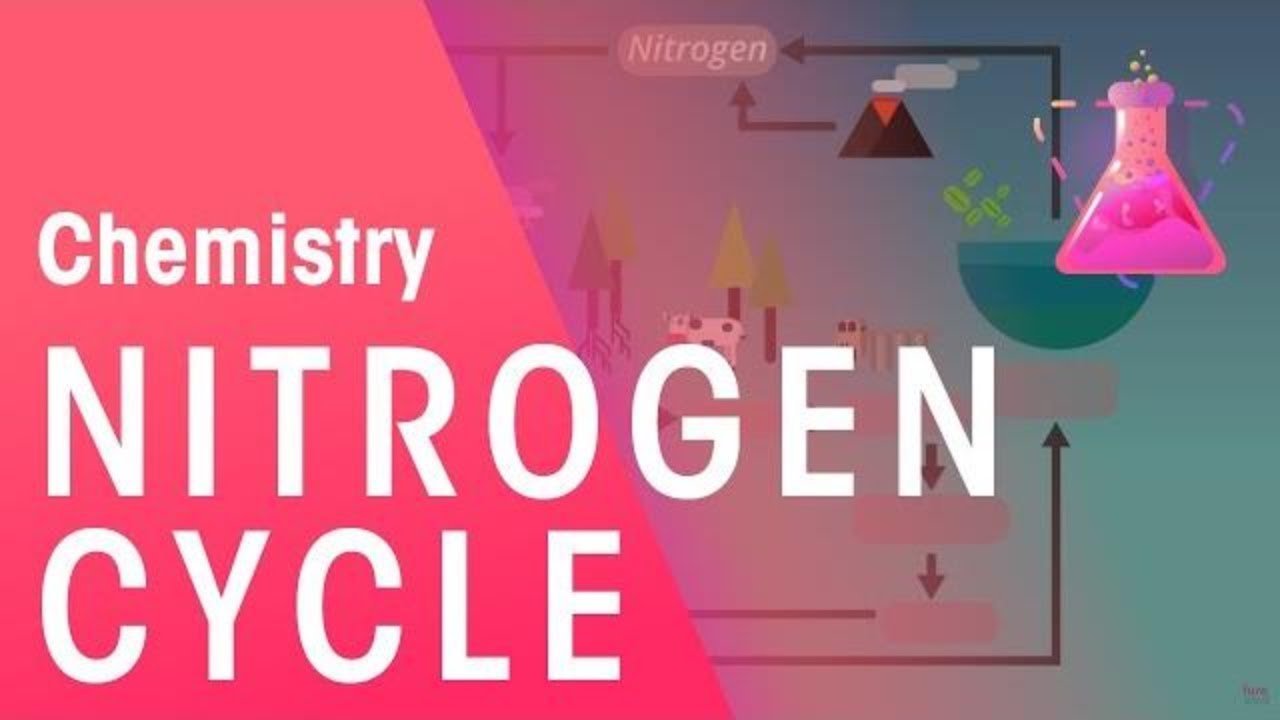Nitrogen Cycle Is Key To Life – And How It Is Affecting Ecosystem On Earth
Nitrogen cycle is key to lifeon Earth because it ensures that ecosystems continue to be productive and maintain their health by ensuring that they have enough quantities of nitrogen.
Nitrogen, or N as it is known in science, is a colorless and odorless element.
Nitrogen may be found in the earth under our feet, the water we drink, and the air we breathe.
Nitrogen is the most prevalent element in the Earth's atmosphere, accounting for nearly 78 percent of the total! Nitrogen is essential for all living things, including humans.
It is essential for plant growth: if there is insufficient nitrogen, plants cannot survive, resulting in poor crop yields; nevertheless, too much nitrogen may be hazardous.
Nitrogen is required for our food supply, but too much nitrogen may harm the ecosystem.
Importance Of Nitrogen Cycle
The nitrogen cycle is a biogeochemical process in which nitrogen is transformed into various forms before traveling from the atmosphere to the soil to the organism and back into the atmosphere.
There are biological and inorganic types of nitrogen gas.
Organic nitrogen is found in living species and is transferred up the food chain via the eating of other living organisms.
Nitrogen inorganic forms are abundant in the atmosphere.
Symbiotic bacteria that can convert inert nitrogen into proper forms – such as nitrites and nitrates – make this nitrogen accessible to plants.
Aids plants in the production of chlorophyll from nitrogen molecules.
The metabolic process, aids in the conversion of inert nitrogen gas into a valuable form for plants.
Bacteria aid in decomposing animal and plant materials during the ammonification process, which indirectly helps clean up the environment.
Nitrates and nitrites are released into the soil, supplementing it with the nutrients essential for agriculture.
Nitrogen is an essential component of the cell, forming several vital chemicals and biomolecules.
Nitrogen is also cycled by human activities such as fuel burning and nitrogen fertilizer application.
These mechanisms raise nitrogen-containing chemical levels in the atmosphere.
Nitrogen-containing fertilizers are carried away in lakes and rivers, causing eutrophication.
Nitrogen undergoes a variety of transformations to preserve ecological equilibrium.

The Nitrogen Cycle | Environmental Chemistry | Chemistry | FuseSchool
Nitrogen Cycle Steps
The nitrogen cycle is a cyclical process in which nitrogen flows between living and nonliving substances such as the atmosphere, soil, water, plants, animals, and microbes.
Microscopic living entities with just one cell may be found all over the place.
Bacteria may decompose or break down organic substances in soils.
Nitrogen must transform to go through the different phases of the cycle.
Nitrogen exists in the atmosphere as a gas and soils as nitrogen oxide and nitrogen dioxide.
When used as a fertilizer, it may be found in various forms, including ammonia, which can be further processed into a different documentplants can use its fertilizer, ammonium nitrate.
There are five steps to the nitrogen cycle.
- Nitrogen fixation:There is a significant pool of nitrogen gas in the Earth's atmosphere that is "unavailable" to plants since it cannot be used directly by plants in its gaseous condition. Nitrogen fixation is how nitrogen gas is transformed before plants can use it. Fixation is when nitrogen in the atmosphere is converted into forms that plants may absorb via their root systems. Nitrogen may also be fixed during the fertilizer production process. Except for legumes, all plants under cultivation have seed pods in half. Legumes obtain nitrogen via nitrogen fixation in their root nodules.
- Mineralization:Nitrogen is transformed from an organic to an inorganic form that plants may use. When the plant's nutrients are gone, it dies and decomposes. This is crucial in the nitrogen cycle's second stage, mineralization.
- Nitrification:It is the third stage in converting ammonia to nitrites and nitrates. Plants do not directly utilize nitrites, but bacteria may convert them into a form that plants and animals can use. Nitrification is essential for plants because it supplies an abunabundantble nitrogen for their root systems to consume.
- Immobilization:The fouImmobilization is the fourth phase in the nitrogen cycle. It is often known as the reverse of mineralizationilization is essential because it aids in the management and balance of nitrogen in soils by tying it up in microorganisms or immobilizing the nitrogen. Because microorganisms devour ammonium and nitrate, these forms of nitrogen become unavailable to plants, resulting in a nitrogen deficit or a nitrogen shortage.
- Denitrification: It is the process by which bacteria convert nitrates into atmospheric nitrogen (N2) in the fifth stage of the nitrogen cycle. This results in an overall loss of nitrogen from soils as the gaseous form of nitrogen travel into the atmosphere, reversing our progress.
Eutrophication
Excess nitrogen in the soil may also leach—or drain—into subsurface water sources, or it might reach aquatic systems as aboveground runoff.
This extra nitrogen may accumulate, resulting in a process known as eutrophication.
Excessive nutrient levels (such as nitrogen) in a lake or other body of water result in dense development of aquatic plant life, such as algae.
Eutrophication occurs when too much nitrogen enriches the water, promoting excessive plant and algae development.
Too much nitrogen may tint a lake bright green or other hues, resulting in a "bloom" of stinky algae known as phytoplankton.
Tiny, tiny sea algae (also known as microalgae) thrive under sunlight.
Microbes in the water break down phytoplankton as they die.
Decomposition lowers the quantity of dissolved oxygen in the water, resulting in a "dead zone" with insufficient oxygen to sustain most living forms.
Organisms in the dead zone perish due to a lack of oxygen.
These dead zones may occur in freshwater lakes and along coastlines where rivers carrying nutrients from agricultural runoff (fertilizer overflow) pour into seas.
Nitrogen Is Key To Life
Nitrogen cycling is critical for maintaining productive, healthy ecosystems because nitrogen reduces plant productivity and biomass.
Understanding the nitrogen cycle between plants and soil may help us make better food-growing decisions.
Understanding the nitrogen cycle may help to reduce pollution caused by overfertilizing soils.
Certain plants can absorb more nitrogen or other nutrients, such as phosphorus, and act as a "buffer" or filter to keep excess fertilizer from entering waterways.
Poplar trees are used as a buffer containing 99% of the nitrate entering subterranean water underground in winter.
Simultaneously, a riverside zone covered with a specific grass retained up to 84 percent of the nitrate, preventing it from entering the river.
Soil nitrogen deficiency starves plants, whereas excess nitrogen can harm plants and animals.
Excess nitrogen and other contaminants poisoning our water supplies are strangling marine life.
Farmers and communities must improve crop nutrient absorption while dealing with waste disposal.
Natural plant buffer zones can absorb nitrogen runoff before it enters bodies of water.
Clearing trees for roads and other development exacerbates the problem by reducing the number of plants available to absorb excess nutrients.
Understanding the nitrogen cycle can help to conserve the Earth's resources.
People Also Ask
How Does The Nitrogen Cycle Affect The Environment?
Nitrogen addition in terrestrial ecosystems may cause a nutritional imbalance in trees, changes in forest health, and biodiversity reductions.
Increased nitrogen availability often results in a shift in carbon storage, affecting more processes than simply the nitrogen cycle.
What Is The Purpose Of The Nitrogen Cycle?
The nitrogen cycle aids in the incorporation of inert nitrogen from the atmosphere into the metabolic processes of plants and animals.
Because plants need nitrogen to make chlorophyll, the nitrogen cycle is critical to their survival.
Why The Nitrogen Cycle Is Important?
The nitrogen cycle is important because nitrogen is a necessary ingredient for life on Earth.
Nitrogen is an essential component of amino acids, the building blocks of proteins, and nucleic acids, the building blocks of genetic material (RNA and DNA).
Conclusion
The nitrogen cycle is key to life because it is the primary nitrogen source for plants, the most abundant component of our atmosphere, and an element required for all life forms.
A better understanding of the nitrogen cycle, in which nitrogen flows from the atmosphere to the ground, where it is fixed in the soil, and then back to the atmosphere, will assist us in producing nutritious crops and preserving our natural environment.
